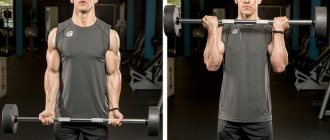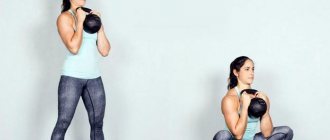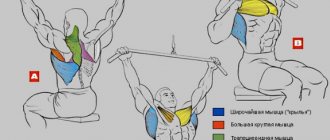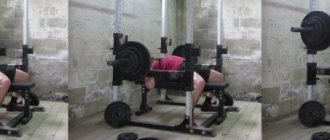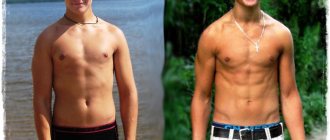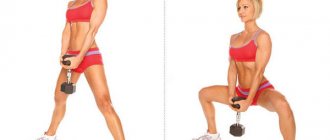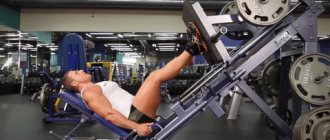May 4, 2021 Admin Home page » Training details
Find out the best barbell exercises to build strength, gain mass, and improve muscle endurance. Exercise technique and instructional video.
It is no secret to experienced athletes that barbell exercises are basic in bodybuilding and powerlifting. Using a bar with weights, you can maximally load all muscle groups, engage even deep-lying fibers and achieve impressive results.
Below are the TOP 10 exercises that have shown maximum effectiveness in practice:
Bench press
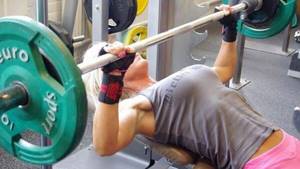
This is a basic exercise for developing the muscles of the chest, triceps and the entire shoulder area. The bench press is the main argument for developing strength in all strength sports. It can be performed from different angles, using various areas of the chest for comprehensive development of all muscles.
Detailed technique and a visual video of the exercise are here.
Deadlift

The main exercise for developing all the muscles of the body; all areas from the calves to the trapezius are involved in the work, because more than 75% of the muscles are involved in the work. The exercise is a good boost not only to the growth of muscle mass and strength, but also an excellent way to burn excess fat deposits; those who do it will confirm how hard it is and how much sweat is released.
The main load is placed on the muscles of the back, legs and buttocks; if these areas need to be tightened, this exercise must be included in your training program. There are variations of exercises, such as straight leg deadlifts, power rack deadlifts, and sumo deadlifts.
Detailed technique and a visual video of the exercise are here.
Dependence of the number of repetitions on the goal
To increase muscle mass and increase strength
All exercises are performed in 4-5 approaches, each with 5-6 repetitions. Between approaches you need to pause to restore your breathing. The total duration of such training should be 3-6 months.

To get rid of excess fat
All exercises are performed in 2-3 approaches. 12-15 repetitions in each. Rest between approaches should be about two minutes, during which you cannot sit , you must walk slowly.
A few words about the weight of the barbell for exercise . If the exercises are done with great effort, the skin of the face and neck becomes red, the blood vessels swell, and breathing is difficult, it is necessary to reduce the load.
Bent-over barbell row
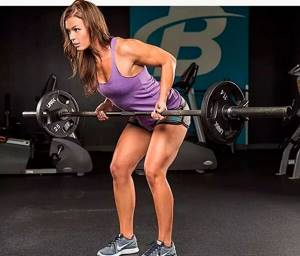
It is well suited for pumping up the thickness of the back; if the back is tilted at 50-60 degrees, the central part is actively trained; when the back is tilted at 60-75 degrees, the upper part and part of the trapezoidal part are included in the work. The effect of this exercise will be felt in sports such as boxing, wrestling, swimming, rowing.
The exercise can be performed with a regular grip or with a reverse grip; in the latter case, the biceps and muscles located closer to the spine are more involved in the work.
Detailed technique and a visual video of the exercise are here.
Squats
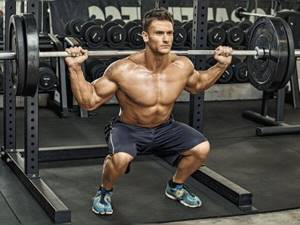
Squats with a barbell are the best exercise for developing quadriceps, buttocks and partially thigh muscles. It is often used not only as a mass-gaining exercise, but also for rehabilitation after injuries or as recovery after a surgical period.
When performing squats, despite the fact that the primary load falls on the lower part, the back, abs and core muscles receive part of the load, because holding the barbell in the correct position requires effort.
Detailed technique and a visual video of the exercise are here.
What alternatives are there to the classic bench press?
Greetings, friends! One of the components of an athletic body in fitness is broad shoulders. Even with well-developed lats, if you have undeveloped deltoids you will lose a lot in proportions. And for guys with a narrow shoulder girdle, developing shoulder muscle mass is almost a priority task. And if you think that in fitness and bodybuilding, naturally broad-shouldered athletes always have an advantage, then this is not so. A good example of this is Larry Scott.
One of the main exercises for deltoids is the military press, which is divided into the sitting and standing military press. We will talk about the first variety today.
After warming up, we perform the first approach without weight - we squat with outstretched arms. We perform another set with an empty bar. Let’s move on to the main block:
- IP – the feet are rigidly fixed in line with the shoulders, the toes are turned inward by 20°.
- Taking an overhand grip wider than the shoulder line, remove the bar from the rack. To avoid excessive load on the spinal column and not to overstrain the wrists, we place the rod in the upper part of the shoulder blades.
- To keep your back straight, fix your gaze at the top point, while exhaling, slowly move your buttocks back, squat until your thighs are horizontal with the floor.
- We begin the lift by straightening the pelvis, body, and knees. If you start the process by straightening the knee joints, the biomechanics of movements will be disrupted. The goal is not to push the barbell with your legs, but to evenly stretch your torso upward.
- During the squatting phase, the fulcrum must be in the middle of the foot, otherwise shifting the weight to the toes will create conditions for falling forward.
Rounding the back, transferring tension from the pelvis to the contracted knees, deep squats are classic causes of injuries.
To be on the safe side, it’s good for beginners to have a partner nearby. If the weight is chosen incorrectly, it is not always possible to rise from the lowest point without outside help.
The bench press is a universal exercise suitable for developing the overall strength of the athlete and gaining muscle mass in the pectoral muscles and throughout the shoulder girdle. At the same time, the style of performing bench presses “for strength” and “for mass” is in most cases different.
When performing strength presses, we work in a small range of repetitions (usually no more than six), doing each repetition at full amplitude, fixing the barbell at the lower and upper points. In order to reduce the amplitude, as well as involve more muscles in the work, the athlete does a kind of “bridge” exercise while lying on a bench. In this case, the grip is used as wide as possible (the maximum allowed according to the rules of powerlifting is 81 cm).
When working on mass, an excellent option for performing the bench press is to work in a shortened amplitude. We do not fully extend our elbows, we work without pauses, so the pectoral muscles and triceps experience constant tension. In this case, the athlete does not bend over on the bench to shorten the amplitude, but lies flat on the bench; some experienced athletes even prefer to put their feet on the edge of the bench or keep them in the air slightly above the level of the body. The meaning is clear - this way we have fewer points of contact and do not involve antagonist muscles in the work.
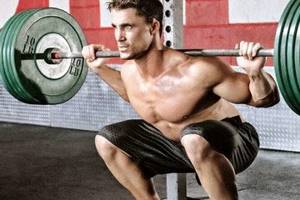
The main muscle groups worked when performing the bench press are: pectorals, triceps and anterior deltoids.
Below is a classic bench press technique that will work for most athletes. Depending on your level of physical fitness, you can complicate and modify it, for example, work without support on your legs or use additional equipment that complicates movement control: rubber loops or chains. Let's figure out how to do the bench press with a barbell correctly.
As with any basic movement, the key to increasing working weights lies in proper load distribution and performing auxiliary exercises for the muscles involved in a given movement. How to increase your bench press?
Load distribution is quite simple. The bench press is an exercise that requires a lot of recovery resources, so it's no surprise that you can't progress on it from workout to workout unless you have phenomenal genetics. You should alternate bench press workouts according to their severity and intensity.
For example, in one workout we work with heavy weights in a low rep range, in the next we do high-rep bench presses or bench presses with a pause on the chest with a medium weight, and we also work the pectoral muscles from other angles using dumbbell incline presses, push-ups parallel bars, dumbbell flyes and other exercises.
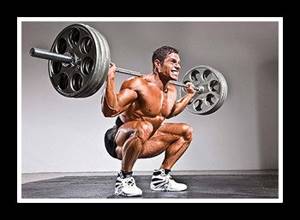
In Russia, bench press competitions are held under the auspices of many federations. However, the official federation (Russian Powerlifting Federation - FPR) not long ago included the raw bench press division within its purview, and its standards have not yet been fully spelled out; the MS, MSMK and Elite standards have not yet been determined.
TABLE OF DIFFERENT STANDARDS FOR MEN (AWPC)
(BARREL PRESS WITHOUT EQUIPMENT)
| Weight category | Elite | MSMK | MS | KMS | I | II | III | I junior | II junior |
| 52 | 127.5 | 110 | 95 | 82.5 | 75 | 67.5 | 57.5 | 47.5 | 37.5 |
| 56 | 137.5 | 120 | 102.5 | 90 | 80 | 72.5 | 62.5 | 52.5 | 42.5 |
| 60 | 147.5 | 127.5 | 112.5 | 97.5 | 87.5 | 77.5 | 67.5 | 55 | 45 |
| 67.5 | 165 | 142.5 | 125 | 107.5 | 97.5 | 87.5 | 75 | 62.5 | 50 |
| 75 | 180 | 155 | 135 | 117.5 | 105 | 95 | 82.5 | 67.5 | 55 |
| 82.5 | 192.5 | 167.5 | 145 | 127.5 | 112.5 | 102.5 | 87.5 | 72.5 | 57.5 |
| 90 | 202.5 | 175 | 152.5 | 132.5 | 120 | 107.5 | 92.5 | 77.5 | 60 |
| 100 | 215 | 185 | 162.5 | 140 | 125 | 112.5 | 97.5 | 80 | 65 |
| 110 | 225 | 195 | 167.5 | 147.5 | 132.5 | 117.5 | 100 | 85 | 67.5 |
| 125 | 235 | 202.5 | 177.5 | 152.5 | 137.5 | 122.5 | 105 | 87.5 | 70 |
| 140 | 242.5 | 210 | 182.5 | 157.5 | 142.5 | 127.5 | 110 | 90 | 72.5 |
| 140 | 250 | 215 | 187.5 | 162.5 | 145 | 130 | 112.5 | 92.5 | 75 |
TABLE OF DIFFERENT STANDARDS FOR MEN (WPC)
| Weight category | Elite | MSMK | MS | KMS | I | II | III | I junior | II junior |
| 52 | 150 | 130 | 112.5 | 97.5 | 87.5 | 77.5 | 67.5 | 55 | 45 |
| 56 | 162.5 | 140 | 122.5 | 105 | 95 | 85 | 72.5 | 60 | 47.5 |
| 60 | 175 | 150 | 130 | 115 | 102.5 | 92.5 | 77.5 | 65 | 52.5 |
| 67.5 | 195 | 167.5 | 147.5 | 127.5 | 115 | 102.5 | 87.5 | 72.5 | 57.5 |
| 75 | 212.5 | 182.5 | 160 | 140 | 125 | 112.5 | 95 | 80 | 65 |
| 82.5 | 227.5 | 197.5 | 170 | 147.5 | 132.5 | 120 | 102.5 | 85 | 67.5 |
| 90 | 240 | 207.5 | 180 | 157.5 | 140 | 125 | 107.5 | 90 | 72.5 |
| 100 | 252.5 | 220 | 190 | 165 | 147.5 | 132.5 | 115 | 95 | 75 |
| 110 | 265 | 227.5 | 197.5 | 172.5 | 155 | 140 | 120 | 100 | 80 |
| 125 | 275 | 240 | 207.5 | 180 | 162.5 | 145 | 125 | 105 | 82.5 |
| 140 | 285 | 247.5 | 215 | 187.5 | 167.5 | 150 | 130 | 107.5 | 85 |
| 140 | 292.5 | 252.5 | 220 | 192.5 | 172.5 | 155 | 132.5 | 110 | 87.5 |
It is very important to know how to do barbell squats correctly. This exercise has a number of variations, but we will now look at the classic technique. It assumes the following nuances:
- Positioning the legs. It should match the width of your shoulders. The toes should be pointed forward, you can spread them out a little. This is the starting position, which can be called classic. When you master squats with a barbell, this option will be the basic one, and only then you can try other options. To prevent you from lifting your heels off the floor, you can use pancakes, although this does not bring any benefit or particular convenience - it is important to adjust the technique here.
- Grab. Typically a closed grip is used. The distance between the hands does not play a special role, but it is important that they are located symmetrically from the center. This is necessary so that you do not lose your balance when squatting.
- Neck and eyes. In the question of how to squat with a barbell correctly, this is also important. Look a little higher than the horizon - this will allow you to maintain the correct position of your neck, keeping it straight. When you lower your eyes, your neck will tilt automatically. And this can provoke spinal injury and increase the risk of osteochondrosis. Therefore, remember that you cannot look at the floor while squatting.
- Neck position. The barbell can be held on the shoulder blades, shoulders, and front deltoid. The squatting technique with a barbell on the shoulders is considered classic; this is the so-called golden mean. With this arrangement of the bar, the load will be distributed between the legs and back.
- Starting position and downward movement. You need to place your feet shoulder-width apart, turn your toes outward, remove the barbell from the rack with a closed grip, place it on your neck in the area of the rear deltoid, then take a step back from the rack. When squatting, keep your back straight and lean forward slightly - this will help reduce the load on your spine. Look straight ahead. When squatting, your buttocks will move back. The knees should not extend beyond the location of the feet. The main load should be placed on the legs, and movements should be smooth. If the technique for performing squats with a barbell on the shoulders is correct, then the back and front surfaces of the thighs, buttocks and lower back will be worked out.
- Squat depth. You can squat until your thighs are parallel to the floor, or you can go lower. With deep squats, you can better work your hips and buttocks, and accordingly, the effectiveness of the exercise may increase.
- Upward movement. Rise up, pushing your heels off the floor. Straightening your legs, return to the starting position. Repeat the exercise as many times as necessary.
When doing barbell squats, it is very important to control your breathing. As you move down, inhale, and as you go up, exhale. Sit down and rise smoothly, do not spring or jerk. In the upper position, bend your legs slightly and fix this moment.
French press with barbell
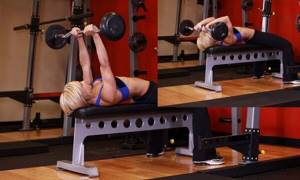
The exercise is aimed at developing the triceps, and it uses not a specific area, but all 3 muscle areas as a whole. You should not ignore this exercise, because the triceps make up 70% of the muscle mass of the arm and only 30% is occupied by the biceps, and not vice versa, as some people think.
Detailed technique and a visual video of the exercise are here.
Biceps exercises
Biceps
(biceps brachii) is perfectly visible under the skin. Its main purpose is to bend the forearm at the elbow joint, and the shoulder at the shoulder joint. Biceps love high-repetition training with not very heavy weights. It is enough to pump your biceps a couple of times a week. Below are the best biceps exercises that you can always do in the comfort of your home.
| Standing dumbbell curls for biceps. Standing dumbbell curls. Take dumbbells in your hands and stand straight with your knees slightly bent. Press your elbows closer to your body, turn your palms towards your hips. Begin to lift the dumbbells to your shoulders, smoothly bending your arms. Watch the shoulder part of your arms - try to keep them motionless. As you continue lifting the dumbbells, begin supination—turn your hands, palms up. At the very top, when your biceps are tense, hold for a split second and contract your biceps. Return to the starting position in the same way. If desired, you can bend your arms alternately. Lifting dumbbells can also be done in another way, turning the palms of your hands not towards your hips (when the dumbbells are lowered), but forward. In this case, this position of the palms should be maintained throughout the entire approach. |
| Seated dumbbell curls for biceps. Seated dumbbell curls. You will need a bench or narrow chair. If you want to complicate the task, use a chair with a vertical back or place a stool against the wall and rest your back. Unlike the “standing” position, the “sitting” position allows you to perform the exercise more correctly. After all, this way you will no longer be able to easily help yourself with your back muscles or body movements. As in the previous version, the exercise can be repeated not only with both hands at once, but also in turn. |
| Hammer (hammer, hammer). Take dumbbells in your hands and stand up straight. Feet slightly wider than shoulder width and slightly bent at the knees. Turn your palms towards your body and maintain this position of your hands throughout the exercise. Keep your elbows close to your body, they should not “dance.” Using your biceps, slowly begin to bend your arms, allowing only your forearms to move. Having contracted your biceps, hold for half a second and also smoothly return to the starting position. You can’t pause here, so immediately bend your arms. Perform the required number of repetitions. The exercise can be repeated with both hands or alternating them: right - left, right - left, etc. As you feel comfortable.” The “Hammer” actively engages not only the biceps, but also the brachialis (brygialis) muscle, which is located underneath it. |
| Concentrated biceps curl. Concentrated arm curl with a dumbbell while seated. This is the most common at home and classic exercise for increasing the peak of the biceps. Concentrated dumbbell curls also engage the brachialis and brachioradialis muscles. It is recommended to complete the biceps workout. With dumbbells in your right hand, sit on a bench/chair/stool, spread your legs, lean slightly forward. Place your left hand on your left thigh, and press the elbow of your right hand to the inside of your right thigh. Your right shoulder is vertical, the dumbbell is not touching the floor, your arm is straight. Begin to smoothly bend your right arm all the way. Hold for half a second, feel the contraction of your biceps, and also smoothly return to the starting position. Complete the required number of repetitions. Change your hand. |
Barbell Curl

One of the most popular and sought after exercises for developing biceps. It doesn’t matter whether you are a beginner or a professional, it is always in the arsenal of exercises for increasing mass and developing strength. By changing the grip width, you can vary the load; a narrow grip trains the outer part of the biceps, a shoulder-width grip trains the central part, and a wide grip works mainly the inner area.
Detailed technique and a visual video of the exercise are here.
Butt workout
Fitness with a barbell has a positive effect on the development of the lower body. It is useful to do squats, lunges, and deadlifts. The gluteal muscles are worth pumping up for at least two reasons. They play an important role when walking and running. In addition, this muscle group is distinguished by its attractive appearance. Many people pump up their buttocks to increase attention from the opposite sex.
Deadlift

When performing the exercise, tension goes to all muscle groups of the body - back, legs, abs, and many others. It improves metabolism and acts as a cardio exercise on the body. The main rule is that your back should be straight when performing a deadlift; you must not bend or arch it, as this can lead to injury.
Technique:
- Stand facing a barbell lying on the floor, spread your legs slightly wider than your hips, feet perpendicular to the bar.
- Bend your knees, lower your chest slightly, and grab the barbell with your hands shoulder-width apart. The grip should not be too wide.
- Stand with your arms raised, straighten your back, push your hips slightly forward, squeezing your buttocks.
- Lower the projectile to the floor, after 3 seconds repeat the exercise.
- Perform 3–5 sets of 10–12 reps.
Squats
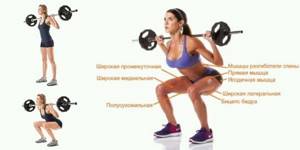
This basic barbell exercise works a large number of muscle groups. Squats are the best exercise for pumping up your legs and buttocks. It is very important to follow the execution technique.
For greater safety, a beginner should exercise with a barbell without weights.
Common mistakes when squats are bringing the knees together, insufficient depth of the buttocks, lifting the heels off the floor, rounding the back.
Technique:
- Stand straight, feet shoulder-width apart, hold the barbell with your hands near your collarbones, secure the position.
- Keeping the bar in this position, exhaling, squat down, lower your buttocks to your heels. Keep your legs straight and keep your back straight.
- Exhaling, return to the starting position, squeezing your buttocks.
- Repeat 10–12 times.
Lunges forward
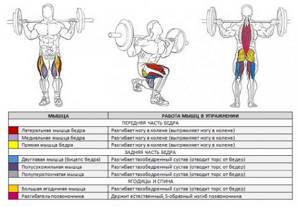
During this exercise, several muscle groups work - quadriceps, hamstrings, gluteus maximus, which determine the shape of the butt. Lunges can be done only if there are no problems with the knee joints, because there is a serious load on them.
Technique:
- Place the barbell at the base of your neck behind your head, straighten your back and chest, and place your feet slightly less than shoulder-width apart.
- Take a long step forward and hold the position. The supporting leg should be on the toe, and the working leg should be on the entire foot.
- Return to the original position.
- Perform the exercise alternately 10–12 times.
The length of the step must be chosen based on the fact that the leading leg should form a right angle at the knee. If the supporting foot is placed further and it exceeds 90 degrees, then the gluteal muscle will work to a greater extent. Common mistakes when performing lunges are placing your feet in one line, uneven back, excessive load.
Barbell up press
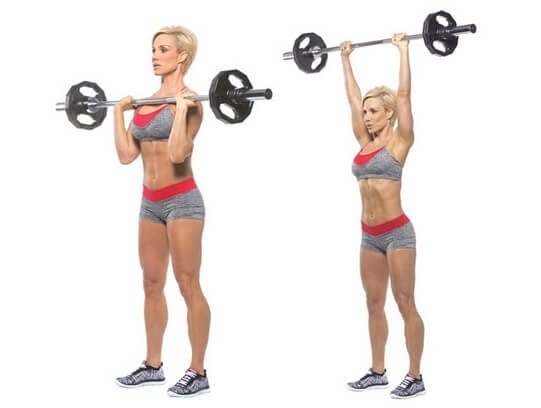
Basic exercise for training the deltoid muscles. If you perform an overhead press with a wide grip, the predominant load falls on the middle deltoid; when doing a barbell press from the chest, the front bundle of deltoids, the upper part of the pecs and the long section of the triceps are more actively involved in the work.
Detailed technique and a visual video of the exercise are here.
Close grip press
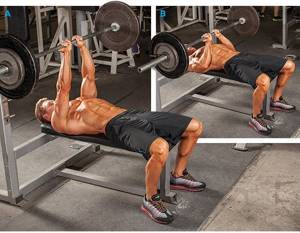
Another basic exercise for developing triceps, the starting position assumes a grip width of 25-30 cm, but not 5 cm, as many do. A position that is too narrow will not engage the triceps well enough and will put the wrists in an uncomfortable position, which can get injured under heavy weights.
It is important to breathe correctly during the exercise, under no circumstances hold your breath; when lowering during the relaxation phase, inhale; when ascending during the effort phase, exhale.
Detailed technique and a visual video of the exercise are here.
Other press options
Squats are divided into many types. They may differ based on the purpose, working muscles and execution technique. Let's look at the main variation:
- You can start with chair squats. This option is suitable for those who have no physical training at all. The starting position is standard. When performing the exercise, having reached parallel with the floor, sit down on a chair.
- Wall squats. An option for those who already have some training. You need to stand against the wall, lean against it, taking a standard starting position. Take a pancake in your hands, which will be pressed to your chest. When squatting, once you reach parallel to the floor, hold for a few seconds. The load in this case will mainly fall on the front surface of the thigh.
- Squats with narrow feet. The exercise is essentially the same as a classic squat, and the starting position will be similar, but the difference lies in the placement of the legs, which here will not be shoulder-width apart, but as narrow as possible. The front surface of the thigh works mainly, and the back helps it.
- Smith machine squats. The Smith squat technique will be similar to regular squats, but there will also be differences. First you need to set the bar at the height that is comfortable for you. Now you need to sit under the bar, take it with an overhand grip and straighten up. Place your feet shoulder-width apart and 20-25 cm further than your hips. When performing, the pelvis is pulled back, the back should be straight, clearly perpendicular to the floor. Inhale and sit down, moving your pelvis back. You need to squat slightly below parallel. Exhaling, push yourself up, using only your legs and buttocks. Look straight ahead to maintain the natural arch of your lower back.
- Front squats. These are squats with a barbell on the sternum, the technique of which requires its own nuances. The bar will be located not on the back, but on the front deltoid. These squats will require some experience. At the same time, the muscles of the thighs, calves, buttocks, and abdomen work. The load on the back and knee joints during such squats is reduced, which reduces the risk of injury. The lumbar region is also less loaded. You need to look straight ahead. The starting position is the same as in classic squats, the only difference is the location of the barbell. Elbows need to be pointed forward. Squat slowly, making sure your chest moves forward. Vary the depth of the squat yourself.
When doing front squats, start moving up from your chest. You don't need to help yourself with your elbows.
Sumo squat exercise, read here. How to do plie squats correctly. Effective practice of squats in a Smith machine, read here. Deadlifts are described in this article. Exercise for men and women, squats with dumbbells. Bodybuilding workouts for men at home, here. Comprehensive workout for girls at home, here. Exercises with a barbell at home, available at this link.
Let's look at several variations of the classic exercise.
Lunges with a barbell
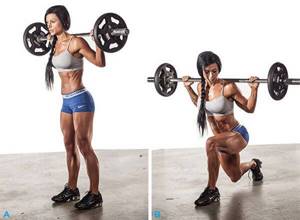
The gluteal muscles are actively developed, and to stabilize the barbell, the core muscles are additionally involved in the work. Can be performed either with free weights or in a Smith machine. If your lower back is experiencing problems, then you should definitely perform the exercise in a Smith machine.
When doing lunges, you need to maintain a width of 20-30 cm between your legs. If you lunge strictly along the line, your balance will be disrupted and you can fall to the floor with the barbell.
Detailed technique and a visual video of the exercise are here .
Exercises with a barbell for the back and hamstrings
Exercises with a barbell while standing on your back

- Standing with a barbell on your shoulders, the weight is necessarily light.
- We lean forward, do not bend our knees and exhale.
- We return to the starting position - inhale.
- Two sets of 8-6 times.
Bent over barbell exercises

- While standing, we bend over with a straight body, hold the barbell in our lowered hands, and hold it shoulder-width apart with an “overhand grip.”
- We bend our arms, pull the barbell towards the body, fix it and return to the starting position.
- We do the exercise at a moderate pace, without holding your breath. We perform two approaches 8-10 times.
Standing shrugs with a barbell behind your back

- While standing, hold the barbell behind your back.
- We raise our shoulders high.
- We return to the starting position, without lowering the barbell to the floor. Two sets of 8-10 times.
Forward bends with a barbell
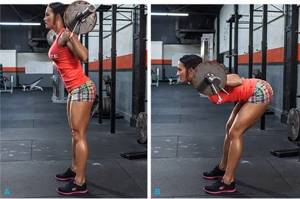
The second name of the exercise is good morning, an alternative to hyperextension and is aimed at training the lumbar muscles and hamstrings. The main thing is to choose an adequate weight so as not to fall head over heels. When performing, do not lift your head up too much, so as not to cause pinching of the muscles or nerves in the neck.
Detailed technique and a visual video of the exercise are here.
Remember these 10 exercises that should be included in your training complex for quality development of the whole body!
